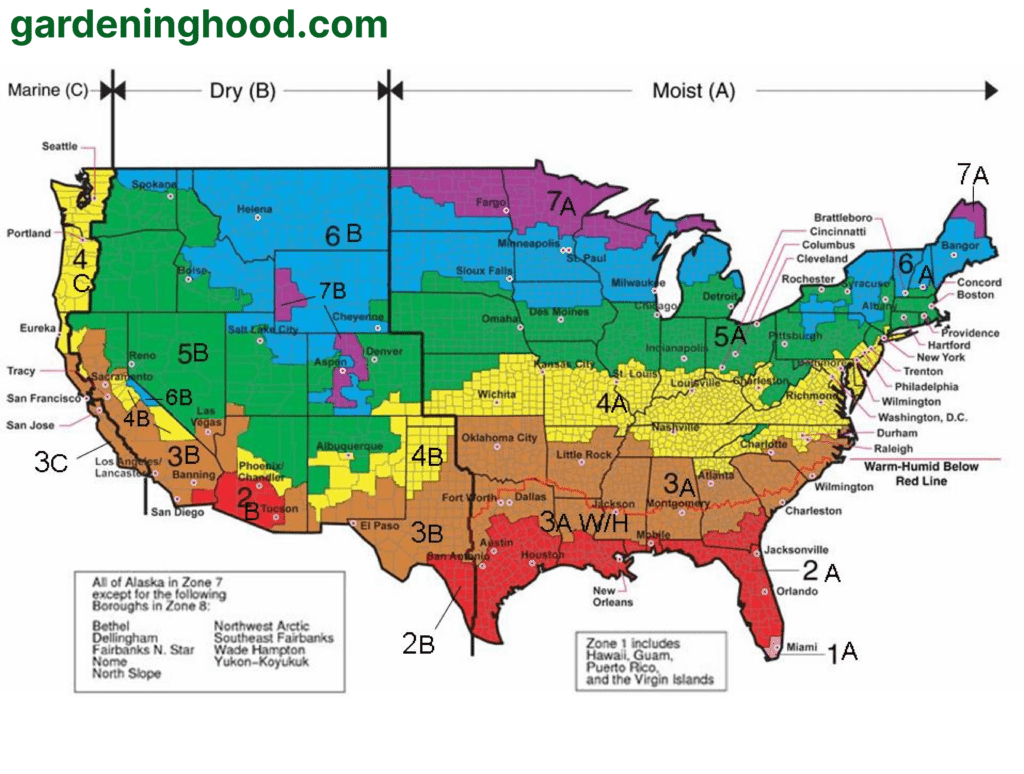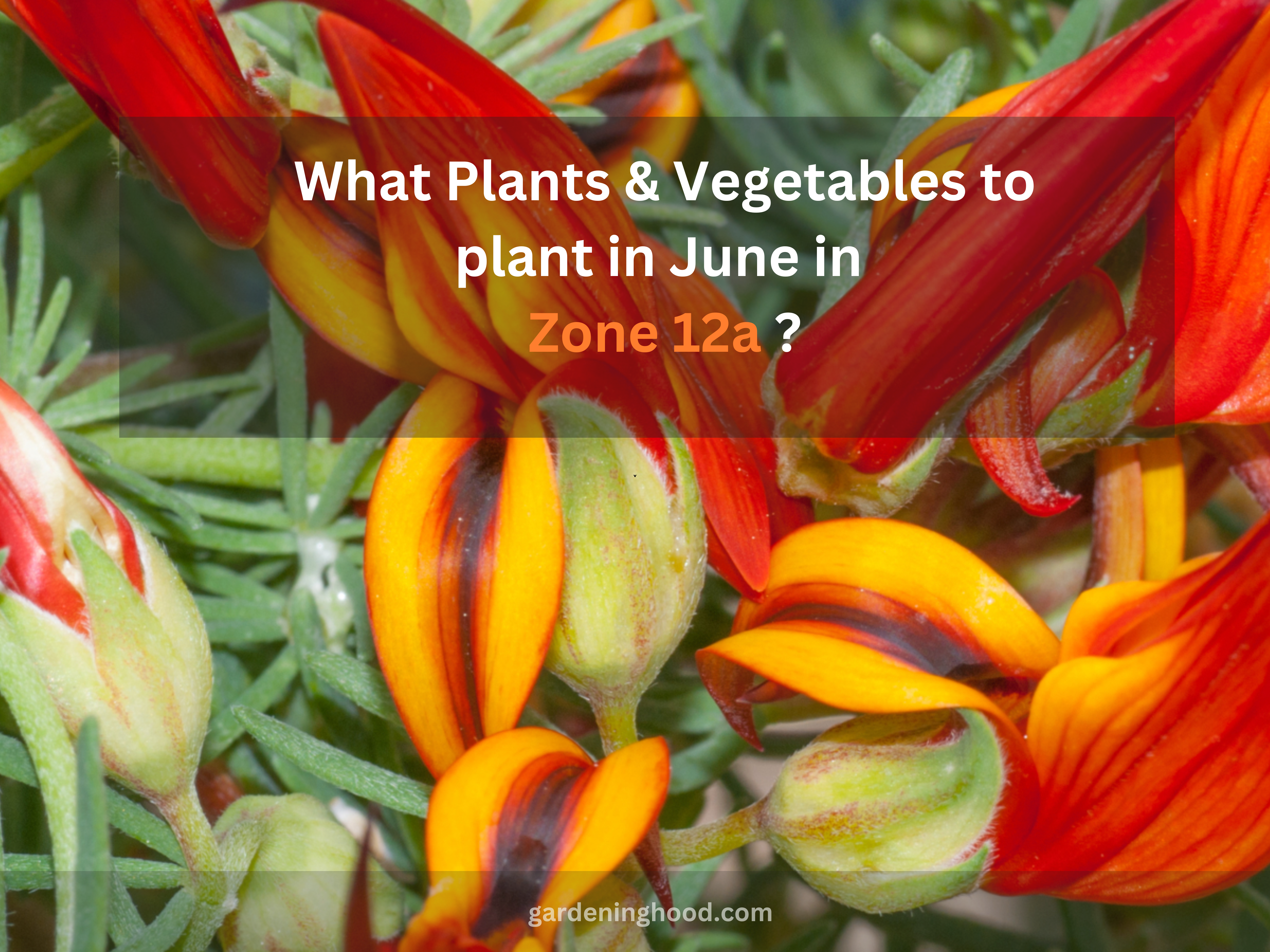What to plant in June in Zone 2a? Plants and vegetables to plant in Zone 2a in June!
A good gardener knows how important is the role of climate in growing plants and for good results, you need to use the zone information in an effective way. According to the USDA, the planting zone is divided into a different section that is based on the weather pattern.in this article, you will get to know about What to plant in June in Zone 2a.
What to plant in June in Zone 2a?
The climate of Zone 2 is bitterly cold and the region that has the climate of Zone 2 is northern and central points in Alaska in America that is approximately from -50℉ to -40℉.there are many places that have the same hardiness zone of 2b like Certain coastal Alaskan having average temperature between -45 to -40 degrees.
The following table shows some information according to USDA which could help to know when to start planting in June zone 2a.
| Lowest Expected Low | -50℉ |
| Highest Expected Low | -40℉ |

Plants and vegetables to plant in Zone 2a in June!
Below is a list of planting guides for Zone 2a:
Vegetables:
The following shows the list of the vegetables that you can plant in Zone 2a in June:
- Artichokes
- Asparagus
- Asparagus lettuce
- Asparagus peas
- Beets
- Bell Peppers
- Bittercress
- Black pepper
- Black radish
- Bok Choi
- Broccoli
- Brussels Sprouts
- Bunching Onions
- Cabbage
- Cantaloupes
- Carrots
- Cauliflower
- Celeriac
- Celery
- Chard
- Chicory
- Chinese cabbage
- Chives
- Corn
- Corn salad
- Cucumbers
- Eggplants
- Endive
- Fennel
- Field Peas
- Garden cress
- Garlic
- Gherkins
- Green beans
- Hamburg root parsley
- Iceberg lettuce
- Indian cress
- Jerusalem artichokes
- Kale
- Kohlrabi
- Leeks
- Lettuce
- Melons
- Mustard greens
- Napa cabbage
- Neeps
- New Zealand spinach
- Okra
- Onions
- Parsnip
- Pea
- Peanut
- Pearl onions
- Peas
- Pole beans
- Potatoes
- Pumpkins
- Purslane
- Radicchio
- Radishes
- Red cabbage
- Rhubarb
- Romaine lettuce
- Romanesco
- Runner beans
- Salsify
- Savoy cabbage
- Scallions
- Shallots
- Snap beans
- Snow peas
- Spinach
- Squash
- Strawberries
- String beans
- Sweet corn
- Sweet Potatoes
- Tomatoes
- Tree onions
- Turnips
- Watercress
- Watermelon
- Welsh onion
- Zucchini

Herbs:
The following shows the list of the herbs that you can plant in Zone 2a in June:
- Garden Orache
- Lemon balm
- Lemon grass
- Lovage
- Mustard
- Oregano
- Parsley
- Pennyroyal
- Redvein Dock
- Rosemary
- Sorrel
- Spearmint
- Stevia
- Summer Savory
- Sweetscented Bedstraw
- Tarragon
- Thyme
- Winter Savory
Flowers:
The following shows the list of the flowers that you can plant in Zone 2a in June:
- Abutilon
- Achillea
- Achimenes
- Aegopodium
- African Daisy
- Ageratum
- Ajuga
- Alstroemeria
- Alternanthera
- Alternaria
- Alyssum
- Amaranthus
- Anagallis
- Anchusa
- Anemone
- Angelonia
- Angel’s Trumpets
- Arabis
- Arctotis
- Argyranthemum
- Armeria
- Artemesia
- Asparagus Fern
- Asters
- Astilbe
- Aubretia
- Aubrieta
- Aurinia
- Axilflower
- Baby Blue Eyes
- Baby’s Breath
- Bachelor Buttons
- Bacopa
- Balloon Flower
- Balsam
- Banana
- Basket of Gold
- Bee Balm
- Begonias
- Bellis
- Bells of Ireland
- Bidens
- Bishop’s Weed
- Black Eyed Susans
- Bleeding Hearts
- Bloodleaf
- Blue Lace Flowers
- Blue Throatwort
- Bougainvillea
- Bower Vine
- Brachycome
- Browallia
- Brunfelsia
- Buddha belly plant
- Bunny Tails grass
- Caladium
- Calendula
- Calibrachoa
- California Poppy
- Calla Lily
- Calliopsis
- Campanula
- Candytuft
- Canna
- Cardinal Flower
- Carnation
- Catharanthus
- Celosia
- Centaurea
- Cerastium
- Chocolate Daisy
- Chrysanthemum
- Chrysanthemums
- Chrysocephalum
- Cigar Plant
- Cleome
- Clover
- Coleus
- Columbine
- Common hollyhock
- Copperleaf
- Coral Bells
- Coreopsis
- Cosmos
- Crassula
- Creeping Phlox
- Creeping Zinnia
- Crossandra
- Cuphea
- Dahlberg Daisy
- Dahlia
- Dahlias
- Dallas Fern
- Datura
- Daylily
- Decorative Kale
- Delphinium
- Dianthus
- Diascia
- Dichondra
- Didiscus
- Digitalis
- Dipladenia
- Doronicum
- Dracaena
- Dusty Miller
- Echinacea
- Elephant Ears
- English Daisy
- Erysimum
- Euphorbia
- Evolvulus
- Fan flower
- Felicia Daisy
- Festuca
- Feverfew
- Fiber Optic Grass
- Firebush
- Flax
- Flowering Kale
- Flowering Maple
- Flowering Tobacco
- Flower-of-an-Hour
- Forget-Me-Not
- Fountain Grass
- Four O’Clock
- Four-o-clock flower
- Foxglove
- Fuchsia
- Gaillardia
- Galium
- Garden Mums
- Gayfeather
- Gazania
- Geranium
- Gerbera
- Geum
- Gladiolus
- Gloriosa Daisy
- Gloriosa Lily
- Gomphrena
- Guara
- Gypsophila
- Hamelia
- Hardy Asters
- Hardy Hibiscus
- Helianthemum
- Heliotrope
- Hemerocallis
- Heuchera
- Hibiscus
- Hollyhocks
- Hosta
- Hypericum
- Iberis
- Iceland Poppy
- Impatiens
- Iresene
- Jasmine
- Lantana
- Larkspur
- Lavender
- Lavender Cotton
- Lenten Rose
- Liatris
- Lisianthus
- Lithospermum
- Livingstone Daisy
- Lobelia
- Lotus Vine
- Lunaria
- Lupine
- Lysimachia
- Maltese Cross
- Marguerite Daisy
- Marigold
- Matricaria
- Mecardonia
- Melampodium
- Mexican Feather Grass
- Millet
- Mimulus
- Missouri Primrose
- Monarda
- Money Plant
- Monkey Flower
- Moon Vine
- Morning Glory
- Myosotis
- Napa Valley Fern
- Nasturtium
- Nemesia
- Nicotiana
- Nierembergia
- Nigella
- Nolana
- Oenothera
- Oleander
- Oriental poppies
- Ornamental Grasses
- Osteospermum
- Oxalis
- Painted Daisies
- Painted Tongues
- Pampas Grass
- Pansies
- Pennisetum
- Penstemon
- Pentas
- Peonies
- Perilla
- Periwinkles
- Petunias
- Phlox
- Pincushion Flower
- Platycodon
- Plectranthus
- Polka Dot Plant
- Polygonums
- Poppies
- Portulaca
- Primroses
- Primula
- Purple Bell Vines
- Purple Coneflower
- Purple Rock Cress
- Pyrethrum
- Red Hot Pokers
- Regal Geranium
- Rock Cress
- Roses
- Ruby Grass
- Rudbeckia
- Sagina
- Salpiglossis
- Salvia
- Santolina
- Sanvitalia
- Saxifraga
- Scabiosa
- Scaevola
- Scarlet Pimpernels
- Scarlet Runner Beans
- Schizanthus
- Scutellaria
- Sedum
- Shasta Daisys
- Skullcap
- Snapdragons
- Snow-in Summer
- Statice
- Steirodiscus
- Stocks
- Stoneseed
- Strawflowers
- Streptocarpella
- Sunflowers
- Sutera
- Swan River Daisy
- Sweet Peas
- Sweet Potato Vine
- Sweet Sultan
- Sweet Williams
- Sweet Woodruff
- Tagetes
- Tall Phlox
- Thunbergia
- Tithonia
- Torch Lilys
- Torenia
- Trachelium
- Trailing Portulaca
- Transvaal Daisy
- Trifolium
- Tritoma
- Tropical Hibiscus
- Tropical Water Plants
- Twinspur
- Verbena
- Veronica
- Vinca Vine
- Violas
- Violets
- Xeranthemum
- Yarrow
- Zinnia

Meaning of frost date:
It refers to the first and last average day that is experienced in a zone which is very important so that you are able to know if the plant will be able to tolerate extreme cold from a frost or not. Make sure to plant the plants after knowing the frost date of them so that you can get the best result and produce a good amount of yield as much as possible.
When to plant vegetables?
There is always a preferred time in which you should plant the vegetables depending on the specific area you are living in and the types of vegetables you are growing. So before planting you need to look for the growing calendar. The vegetables are used to grow unless the last frost date doesn’t come. You can plant any vegetables in your garden after looking at the growing calendar that explains the frost date of a particular vegetable. For exy broccoli and kale are the plants that grow from March to April and corn and tomatoes are vegetables that are used to grow from May to June. After knowing about the calendar the gardener gets help about when to plant and which type of vegetable to be planted.
When to plant flowers?
Planting the flower is very easy when you get the first and last frost date according to your zone. The zones are also divided among themselves which makes a very small difference between the planting dates by weeks or 2 days. You need to look at the zone and the type of flower you are planting as if they are able to tolerate the zone and the Frost date. Flowers like pansies and alyssum are able to survive in light Frost and the flowers like dahlias and nasturtium need warm soil for proper growth. So planting flowers depends upon the frost date with the type of the flower which will help to get good results with different color flowers to bloom.
Conclusion:
For profitable planting, you need to have good knowledge about the planting zone. after reading this article it will help you to know the climate and weather which will help you to maintain the plant life. If a person already knows about the plant zone then it will help you to save money from the starting only.


